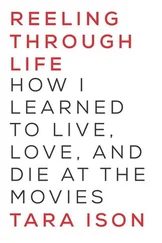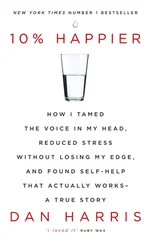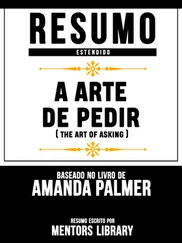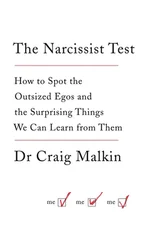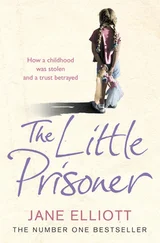I jerked my arms alive, as if in shock, dramatically hovered my hand above my white-painted vase, gazed at him, then selected and silently handed him one of the flowers.
He shrieked with delight.
It worked.
Then somebody else put a dollar in.
Then another.
Then another.
At the end of an hour, the bouquet of flowers was gone.
I climbed down. I schlepped my crates back to Toscanini’s, stashed them furtively in the basement, said hi to my co-workers, slipped behind the counter to make myself an iced coffee with a scoop of free hazelnut ice cream, and sat down at one of the little metal tables outside the shop to count my hat. There was some loose change, but mostly bills. Someone had thrown in a five.
I had made $38 in an hour. On a good tip day at the store, I made $75. In six hours.
I washed my face in the bathroom and walked back to the center of the Square, with the wad of dollar bills in my pocket.
Right at the intersection of Mass Ave and JFK Street, it hit me. I stopped short, stunned by the realization of what had just happened:
I can do this as a job .
I can do this every day that it’s warm and not rainy .
If I just made thirty-eight dollars in an hour, I can work three hours and make about a hundred dollars in a day .
I don’t have to scoop ice cream anymore .
I can make my own schedule .
I don’t have to have a boss .
Nobody can ever fire me .
I WILL NEVER HAVE TO HAVE A REAL JOB AGAIN .
And technically?
I never really did.
• • •
I had dipped my toe into the living statuary experience before, albeit briefly. While drinking seriously, studying casually, and waitressing part-time at a beer garden (free beer!) during a year abroad in a sleepy little German town called Regensburg, I’d decided to try supplementing my income with a beta-version of The Bride: a trippy, white-faced, wheel-of-fortune ballerina statue I named Princess Roulette. I stood frozen in the center of a chalk pie chart I drew in the cobblestoned town square. I’d divided it up into eight sections, each with its own little prop or basket, and I’d wait for a stranger to place a coin in my hat, at which point I’d close my eyes, spin in a circle, and land with a jerk, pointing at a random space. I’d then mechanically proffer up a small gift (an exotic coin, a candy, an antique key), unless, of course, I’d landed in one of the “suicide” spots, in which case I mimed a clownish mini-tragedy, killing myself with a variety of prop weapons. I would spin, stop, open my eyes, trudge slowly over to the waiting bottle of poison while looking incredibly somber, wipe an imaginary tear from my eye, pick up the bottle, drink its invisible contents, and then fall to the cobblestones, gagging and twitching. (I also had a toy gun.) Once I had achieved full corpse pose, I would hope for applause, get up, dust off my glittery tutu, and jauntily return to my frozen position in the center.
It was whimsical but grisly, sort of Harold and Maude meets Marcel Marceau. The Germans didn’t quite know how to react.
One landing spot was neither gift nor suicide: it was the “tea set,” which was supposed to be a jackpot of sorts. If I landed there, I’d grab the hand of my victim, whom I would wordlessly invite to sit on the ground to enjoy an imaginary cup of mime-tea using a vintage collection of cracked cups and saucers I’d bought at a flea market. I assumed that this activity would be utterly thrilling to every passerby. I was sorely disappointed by the fact that not every German took me up on my theatrical offer to enjoy a cup of mime-tea. What gave?
It never occurred to me that staging my own comic suicide with different props in the middle of a small-town plaza and inviting strangers to sit on the ground probably wasn’t the most effective way to win the hearts and deutsche marks of Bavarian families out on their Sunday strolls.
Princess Roulette quickly taught me a lot about the practicalities and economics of being a living statue/performance artist, and a little bit about Germans. The biggest takeaways:
1- It is not profitable to give someone a Thing that cost you two deutsche marks if the person you are giving it to only gives you fifty pfennigs.
2- If you are Performing an Action in exchange for Money, and each Action takes two minutes, and obnoxious eight-year-old Bavarian boys are putting ten-pfennig coins in your basket one after the other while people with real deutsche marks look on with amusement, you are not Maximizing your Performance Time.
3- Germans wearing nice clothes do not like to sit on the ground.
Although I performed as Princess Roulette only four or five times, I quickly learned that the relationship between a street performer and the street audience is a delicate one, one that adheres to a different contract than the one that exists between the stage performer and the ticket-buying audience. There’s a much greater element of risk and trust on both sides.
I learned this the hard way on my very first day, when a friendly-looking man in his thirties walked by with his toddler daughter. Parents out on walks with their curious children are a godsend to street performers; they take great pleasure in supplying their kids with hat money and watching as their offspring experience a spontaneous, magical, and fully supervised interaction-with-a-stranger.
This one, however, went a bit pear-shaped. The dad put a coin into my hat and I began spinning. As I opened my eyes, I saw that the little girl had wandered over to one of my roulette baskets and had helped herself to a huge handful of my gift candy. Upon seeing this, I was at a loss. This child was stealing my candy. I had never anticipated this problem. After considering, briefly, what the correct action was for my character, I looked the little three-year-old girl straight in the eye and, breaking my mime-silence, pretended to cry. Quietly, but committedly, I emitted a high-pitched, but measured, anguished whine of agony over the loss of my candy.
This was not the correct thing to do.
The little girl proceeded to burst into ACTUAL tears and let forth her own (far less measured) wail, and for a split second, our collective, pack-like moan of anguish in that little town square in Germany sounded like some kind of epic, Wagnerian cry of broken, senseless human loss and suffering…
WHY??
I stood frozen, in shock, as the horrified father scooped his emotionally assaulted daughter into his arms and flashed me that universally heartbreaking glare that says, WHAT HAVE YOU DONE TO MY CHILD?
I felt really guilty, like I’d scarred this child for life and drained the joy out of any future trust-based interactions she might have with any street performers, actors, mimes, or human beings.
I also felt—and this was a new emotion—like a bad artist .
In that moment, something seismic shifted. I’d been viewing my role on the street as a performance artist who would share the gift of her weird, arty impulses with the amenable public. I’d grown up an experimental theater kid, writing, directing, and acting in my own surreal and morbid plays on school stages. I wasn’t an entertainer—I was making art , dammit. And though I wasn’t afraid to disturb people, I never wanted to hurt them.
This interaction made me realize that working in The Street wasn’t like working in the theater. The Street is different: nobody’s buying a ticket, nobody’s choosing to be there. On the street, artists succeed or fail by virtue of their raw ability to create a show in unexpected circumstances, to thoroughly entertain an audience that did not expect to be one, and to make random people care for a few minutes. The passersby are trusting you to give them something valuable in exchange for their time and attention, and (possibly) their dollars. Something skilled, unexpected, delightful, impressive, something moving. With few exceptions, they’re not giving you a dollar to confront and disturb them.
Читать дальше

